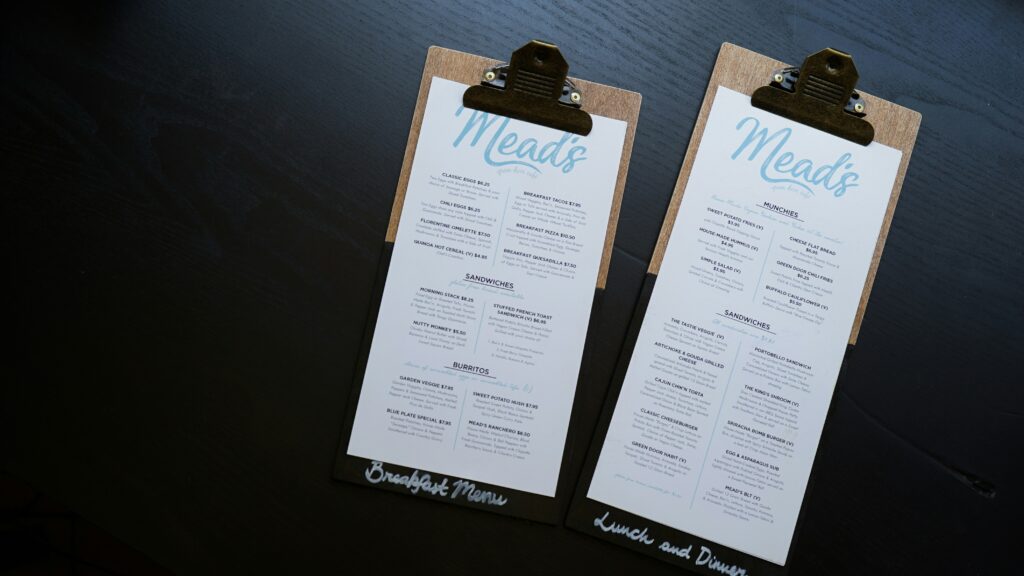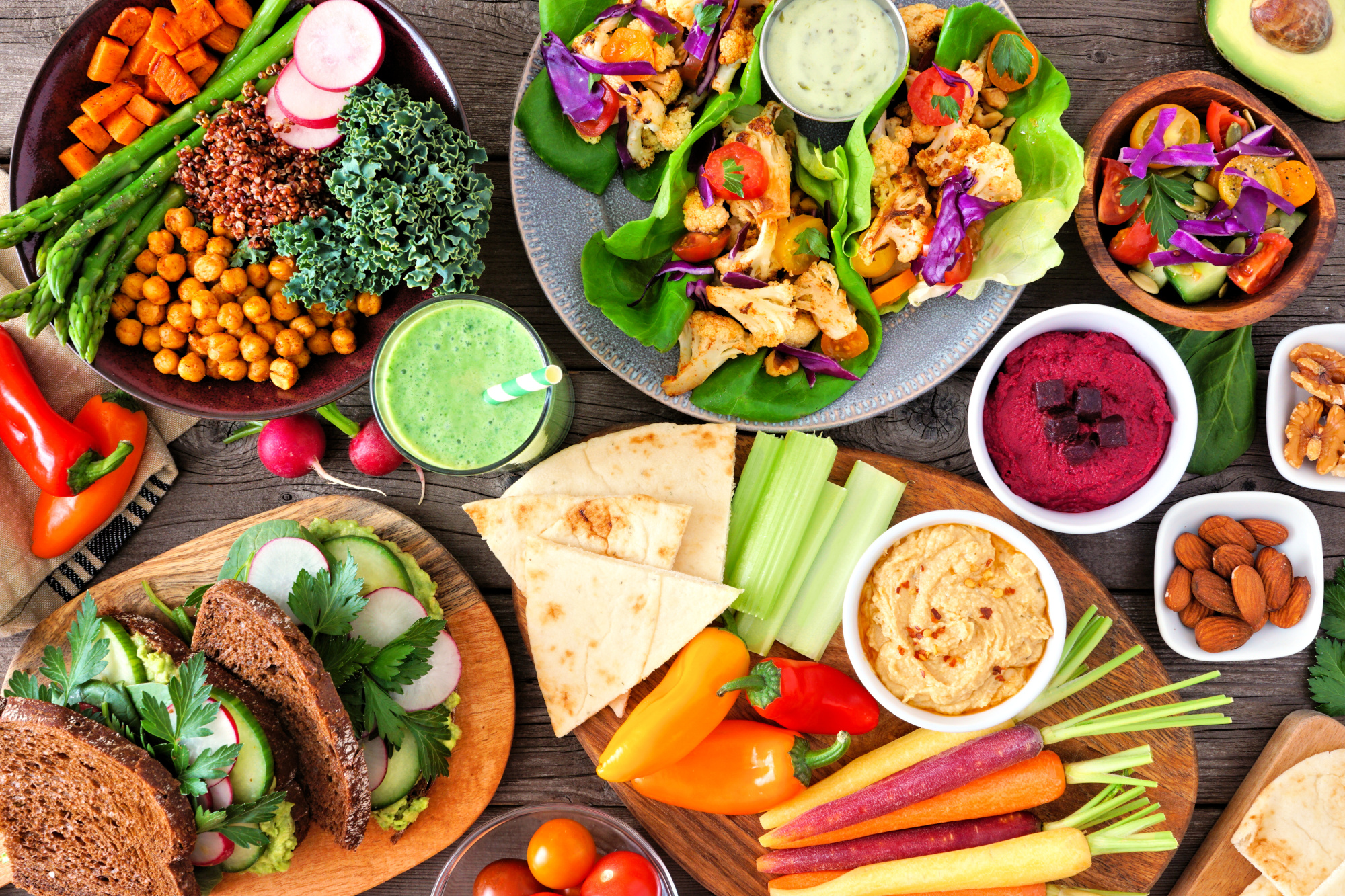How does menu design influence the decision of meat-eating consumers to select plant-based foods?
There’s no denying it – plant-forward diets are on the rise across Europe.
Not only are European consumers looking to increase their consumption of many plant-based foods, but more than half of Europeans are reducing their annual meat intake (51%). On top of this, 40% of European consumers are currently following a flexitarian, pescatarian, vegetarian, or vegan diet.1
In the background, social scientists have been hard at work advancing the social sciences around food choice. Social psychologists, sociologists, and behavioral economists have devised methods to encourage more people to choose healthy and sustainable plant-based options, designing choice environments in ways that encourage better decisions without restricting choice.
One promising intervention that can nudge people towards better food choices is varying the design of foodservice menus.
To take advantage of rising consumer demand, foodservice venues should embrace plant-based options and use ‘nudging’2 techniques to proactively normalize consumption of plant-based alternatives and create a favorable architecture through optimal menu design.
There are different ways that menus can be designed to encourage consumers to choose plant-based options. Some studies have suggested that menus should avoid segregating options into a ‘vegetarian section’, while other approaches suggest leaving out ‘v’ labeling entirely.
Using ProVeg’s latest foodservice studies and surveys, this article will offer must-know insights into menu design that are effective in nudging meat-eating consumers towards choosing plant-based options.
Menu integration is critical
When you include plant-based options on a foodservice menu, where you choose to display them is vital. What’s the best option: displaying plant-based dishes separately to the meat and dairy options, or integrated with them in the main menu?
Segregating plant-based menu items minimizes the likelihood of mainstream meat-eaters choosing them. It also reinforces the perception that plant-based meals are different, which mixed eaters interpret as meaning ‘not for me’.

On top of this, segregation makes it harder for consumers to choose a plant-based option that they might prefer, simply because those options aren’t available in the places where they’re used to looking.
Consumers often find choice overwhelming, so they tend to adopt rapid and simple choice-elimination strategies with menus. A segregated menu area for vegan or vegetarian meals subconsciously invites consumers to ignore these items, because they will often disregard an entire menu section to make choosing easier.
Menu variation
Our What’s on the menu? survey explored how four different menu designs impacted the likelihood of meat-eaters choosing vegetarian options.
The results show that mixed menus are more effective than segregated menus in encouraging consumers to choose vegetarian options – presenting meat-based and vegetarian options together led to an 86% increase in the selection of vegetarian options.
However, the best-performing menu design was the ‘segregated and doubled’ menu, which presented the vegetarian options twice – both mixed into the main menu and in a segregated vegetarian section.
Compared to a completely segregated menu design, displaying vegetarian items in this way led to a 102% increase in the selection of vegetarian options.
These results show that segregating plant-based menu items reduces the likelihood of meat-eaters selecting these dishes, while an integrated menu increases that likelihood.
ProVeg recommends integrating plant-based options into your main menu to encourage consumer adoption. Additionally, we also recommend featuring plant-based menu items in a separate section, so that vegan, veggie, pescatarian, or flexitarian diners can easily find them.
Labeling is less important when influencing meat-eating consumers
Dietary symbols are important for consumers who are seeking a guarantee that a product is vegan or vegetarian. However, these consumers typically make up less than 10% of the total market.
In recent years, foodservice companies have begun experimenting with alternatives. For instance, replacing ‘V’ or ‘Ve’ with ‘PB’, a leaf, or other symbols, the logic being that vegans and vegetarians will always figure out what these symbols mean, whereas omnivorous consumers will gloss over them and focus on the item description without being put off by the category.
The impact of labeling
Our What’s on the menu? survey report found that vegetarian labeling, used by itself, had a relatively small impact on whether meat-eating respondents chose plant-based options. When used, vegetarian labels resulted in just a 3% increase in the selection of veggie options from a mixed menu (compared to a menu with veggie options that were unlabelled). This shows that labeling is of little significance to meat-eating consumers when it comes to choosing plant-based options. Instead, vegan identifying labels can put these consumers off choosing plant-based options.
ProVeg recommends putting less focus on menu labeling and more focus on menu integration. When required, use small pictograms – like a leaf symbol – to denote that a menu item is plant-based. These will minimize the deterring effect that vegan-identifying denominations can have on meat-eating consumers while accommodating those who follow vegetarian or vegan diets.
*Make sure to display a key on your menu to explain what any used pictograms mean.
Language choice on menus is key
When you’re choosing a food item from a menu, another facet of the design that helps you to make your decision is how that item is depicted in words – what the dish is called, how it’s described, and the name of menu section it’s found within.
Additional menu sections
When naming additional vegetarian and vegan menu sections, naming shouldn’t be an afterthought. It’s important to use titles that possess a broad consumer appeal, as opposed to those that that will alienate certain consumers (so avoid titles like ‘vegan’ or ‘veggie’).

The aim is to find additional section names that continue to make plant-based menu items appear as options that are for everyone, not just vegans.
Appealing names
Unfortunately, many fast-food restaurants use unappealing names for their separate plant-based menu sections. In our 2023 Fast Food Ranking Report, ProVeg assessed the landscape of plant-based offerings at the five biggest fast-food chains worldwide, using ProVeg’s scorecard methodology to rank the top restaurants.
Most of the McDonald’s restaurants assessed by ProVeg used section titles like ‘Vegetarian’, the majority of Burger Kings used ‘Veggie’ in their section title, while most KFCs and Pizza Huts featured ‘Vegan’ sections.
By simply renaming additional menu sections, the above fast-food chains could make plant-based menu items more attractive to non-vegan consumers and quickly boost sales.
ProVeg recommends using the term ‘plant-based’ or something similar, like ‘plant-forward’ – get creative!
Plant-based menu items
By using enticing and positive language to name and describe plant-based menu items, you appeal to consumers’ sensory cravings and hunger pangs… and thus, attract their wallets.
Tempt diners to plant-based options via the senses. ProVeg recommends using sensory and experiential words that describe your menu item’s taste, texture, and/or smell, like ‘juicy’, ‘tender’, or ‘creamy’. Using positive descriptors should also help frame plant-based items as equitable options to their animal-based counterparts on the menu.
Additionally, when naming menu items, select words that focus on the product’s culinary theme, cooking technique, or brand of plant-based analog. Minimize the use of words like ‘veggie’ or ‘plant-based,’ and avoid words like ‘vegan,’ ‘vegetarian,’ ‘meat-free’ or ‘meatless’. Inasmuch, refrain from using uninventive, unappealing language that evokes a sense of the menu item lacking something, which will make the consumer feel as though they will miss out if they choose this dish. Be creative and let your senses lead the way!
Successful names
Our 2023 Fast Food Ranking Report found that Subway Global, is great at naming plant-based menu items. Most Subway outlets serve products with names like ‘Rockin’ Moroccan’ and ‘T.L.C. Teriyaki’. Names like these are ideal because they focus on the culinary theme of the dish while avoiding words that tend to turn away ‘mainstream’ consumers.
Likewise, Burger King, Spain, was found to do well on this front. The chain’s menu description of its ‘Nuggets Vegetales’ reads: “The Nuggets of a lifetime, with the flavor you love so much”. The description roots the nuggets in a familiar, tasty consumer experience, though the item name could be improved to appeal to a wider audience.
How else can you attract diners to plant-based menu options?
Price parity is crucial
Price is a barrier to the mainstream adoption of plant-based alternatives. In fact, 39% of European consumers state that price is the most significant obstacle to purchasing alternatives.3

To overcome this, ProVeg recommends pricing plant-based options at levels that are directly comparable to meat-based options (or even cheaper). This will ensure that price is not a barrier to adoption.
For more information on how best to achieve price parity, check out our report, ‘3 ways to achieve price parity and drive plant-based sales’.
Prioritize promotion of plant-based menu options
How can we make a ‘niche’ product appear popular and boost sales in the process? Spread the word about it! Prioritize the promotion of your plant-based menu options over your animal-based items to push the former to the forefront of consumers’ minds. By doing this, you make plant-based dishes appear as the ‘norm’, reducing consumer reservations and increasing willingness to purchase.
This can be done through multiple channels, in dining-in or takeaway settings, on your website, and throughout your social media platforms. Dedicate events and social media posts to plant-based dishes, leverage your home webpage space to nudge consumers towards your plant-based menu items (position plant-based options above animal-based items), and spend less time shouting about your animal-based options in general.
Increase the ratio of plant-based options to animal-based dishes
Make sure to increase the ratio of tasty plant-based options on your menus in relation to animal-based meat dishes – so much about what feels ‘normal’ to consumers is related to what is available. If 50% of the menu (or more) is plant-based, that will feel a lot more normal than if only 5% of your menu is plant-based (even if you apply our nudges)!
Maximize your menu design
To attract meat-eating consumers to plant-based menu options, ProVeg makes the following recommendations:
- Integrate plant-based options into your main menu to encourage consumer adoption.
- Put less focus on menu labeling and more focus on menu integration. But when required, use simple pictograms to identify plant-based dishes,
- Make sure that additional plant-based menu sections have titles that possess a broad consumer appeal.
- Use enticing and positive language to name and describe plant-based menu items.
- Price plant-based options at levels that are directly comparable to meat-based options.
- Prioritize the promotion of plant-based menu options over animal-based ones.
- Increase the ratio of plant-based options to animal-based dishes.
If you’re looking to learn how to attract more customers and grow your plant-based sales, ProVeg can help. Get in touch with us at [email protected] to discuss developing your plant-based strategy.
References
- Evolving appetites: an in-depth look at European attitudes towards plant-based eating, (2023). The Smart Protein project. Available at: Evolving appetites: an in-depth look at European attitudes towards plant-based eating – Smart Protein Project. Accessed 2024-03-20.
- Nudging, as defined by Pelle Guldborg Hansen et al. (2016), is a strategic approach aimed at influencing decision-making processes by shaping the environment in which choices are made. This can involve various methods, such as altering default settings, providing feedback, simplifying decision making processes, or framing choices.
- Evolving appetites: an in-depth look at European attitudes towards plant-based eating, (2023). The Smart Protein project. Available at: Evolving appetites: an in-depth look at European attitudes towards plant-based eating – Smart Protein Project. Accessed 2024-03-20.



